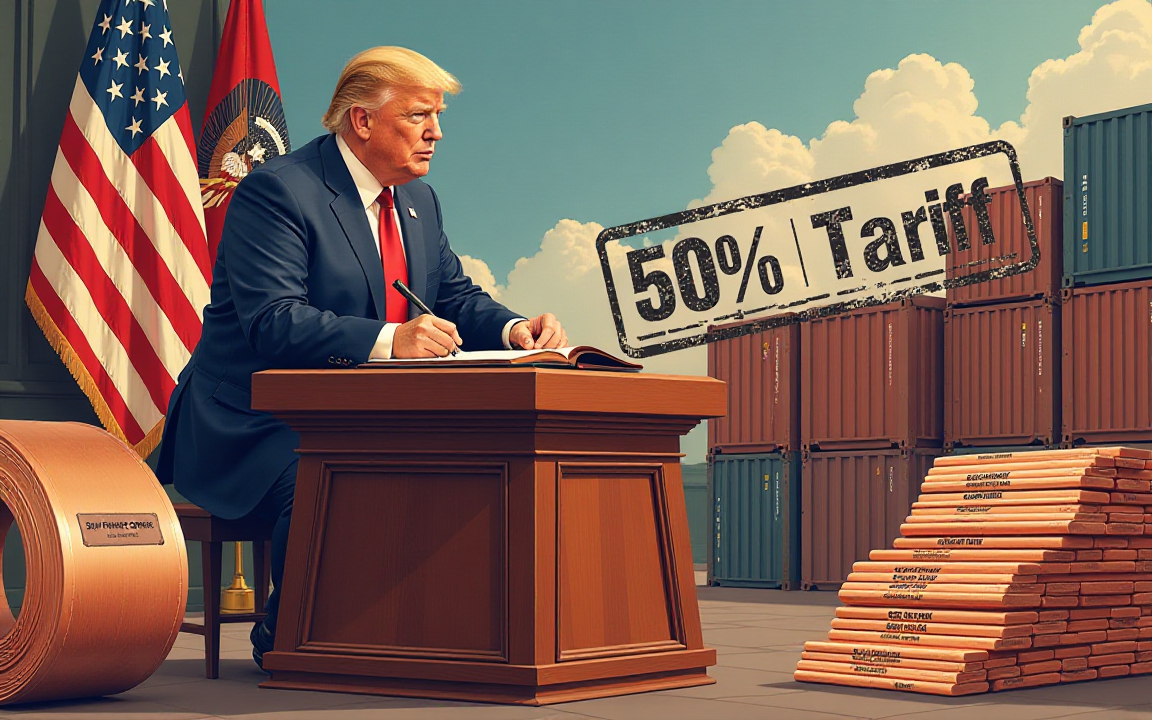President Donald Trump recently unveiled a surprising 50% tariff on semi-finished copper tariffs entering the United States, a move that sent immediate ripples through the global metal markets. This unexpected proclamation, issued by the White House, notably excluded refined copper from its scope, a detail that provided a crucial distinction for the industry.
Prior to the announcement, the market had largely braced for broader US trade policy measures encompassing all raw copper, an essential commodity integral to countless products from electrical wiring to critical auto parts and construction materials. However, the narrower focus of this new duty is poised to mitigate potential higher costs for numerous domestic manufacturers who heavily rely on refined copper imports for their operations.
This specific copper tariffs initiative aligns with previous trade actions undertaken by the Trump administration concerning steel and aluminum imports, all enacted under the purview of Section 232 of the Trade Expansion Act. This particular provision grants the authority to impose duties on national security grounds, signaling the strategic intent behind the administration’s decision.
In a notable and somewhat rare invocation, President Trump also activated the Defense Production Act (DPA), a Cold War-era statute. This measure mandates that a significant portion—specifically 25%—of high-quality domestic production of copper scrap and raw copper within the US must be sold domestically, effective this year, further underscoring the push for internal resource allocation.
According to official statements from the White House, the primary objective behind these combined actions is to fortify America’s copper refining capabilities. The strategy aims to secure a more reliable and cost-effective supply of essential raw inputs, thereby bolstering domestic production and reducing the nation’s reliance on foreign supply chains for this vital metal.
This drive for greater self-sufficiency is paramount, given copper’s indisputable role as a critical input across various sectors, including infrastructure development, advanced electronics, and defense systems. Despite its strategic importance, the United States currently imports nearly half of its total copper supply, with Chile standing as the largest foreign source, according to geological survey data.
Industry experts, while acknowledging the potential for a long-term boost to domestic production and refining capacity, have simultaneously voiced concerns. They caution that these copper tariffs could inadvertently lead to an economic impact of higher prices across a broad spectrum of copper-based products, potentially affecting consumers and businesses alike.
With the tariff officially scheduled to take effect on August 1st, stakeholders across a multitude of industries are now meticulously analyzing the potential economic impact and bracing themselves for the impending ripple effects on both product pricing and intricate supply chain dynamics. The ramifications of this US trade policy shift are keenly awaited as the deadline approaches.






Leave a Reply